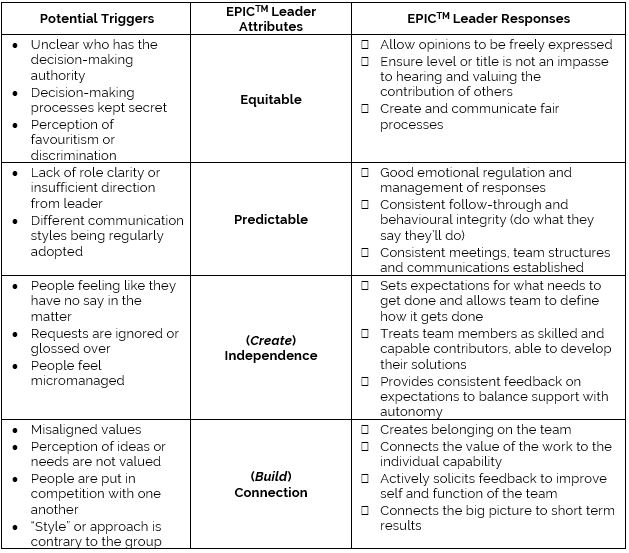These days as a leader you’re not running to avoid large toothed predators or seeking to avoid dangerous competing factions for scarce resources like food or water…… generally speaking anyway. Maybe things are really rough these days for you but hopefully not.
Nope, these days we are dealing with generally more nuanced threats in our environment and yet our ever-so-helpful brain has over the course of many years evolved to scan for those threats. Not only scan for threats but to improve the speed of response time, consistently pattern and create bias to see threats. We actually perceive threats about six times as often as we perceive a reward!
So why is this important?
Here’s the thing about threats, there can be threats that are “real” which can be physically identified through the five senses (sight, sound, taste, smell, touch). There can also be a “perceived” threat that’s a result of the mind bringing together patterns of memory, experience and learned behaviour. It’s the perceived threat that we as leaders are battling with regularly because it’s those threats that cause people to be triggered (move into a threat state) and move away from fully engaging.
What happens when we are busy responding to threats?
The really simple answer is that when the brain perceives a threat, it moves into a “fight or flight” response state (aka an amygdala hijack). This means that all of the great processing power of the brain which may have been devoted to coming up with creative ideas or strategic thinking or insight or attuned communication goes out the window. The person in the triggered state is thinking fully about how to get out of the situation and move away from or respond to the threat as quickly as possible.
What can you do as a leader to manage triggers? BE EPIC
We can’t manage others’ emotional responses but we as leaders can take the steps to predict and create psychological safety, particularly when it comes to difficult or charged situations. We’ve started building our own leadership model (EPICTM) related to triggers and minimizing the associated threats. While this model does not cover off all sources of conflict, lord knows we’ll still be dealing with misunderstood intent and unmet expectations, it does cover off many typical triggers that get in the way of building a high performing team.
Take a look at the chart below as a useful tool to consider in preparation for the next challenging situation with your team. Maybe there are some idea starters for how to reframe and handle things differently:

We’re excited about this model and curious to know what you think! We’d love your feedback and questions or successes in using this model. Please feel free to drop a note over to our community concierge, Shelby Gobbo (sgobbo@goroundtable.com) and let her know what worked (or didn’t)!
Curious to Learn More? Here are some of our favourite reads:
Crucial Conversations by Kerry Patterson, Joseph Grenny, Ron McMillan, Al Switzler
Fierce Conversations by Susan Scott
Leadership and Self-Deception by Arbinger Institute
Radical Collaboration: Five Essential Skills to Overcome Defensiveness and Build Successful Relationships by James W. Tamm and Ronald J. Luye

